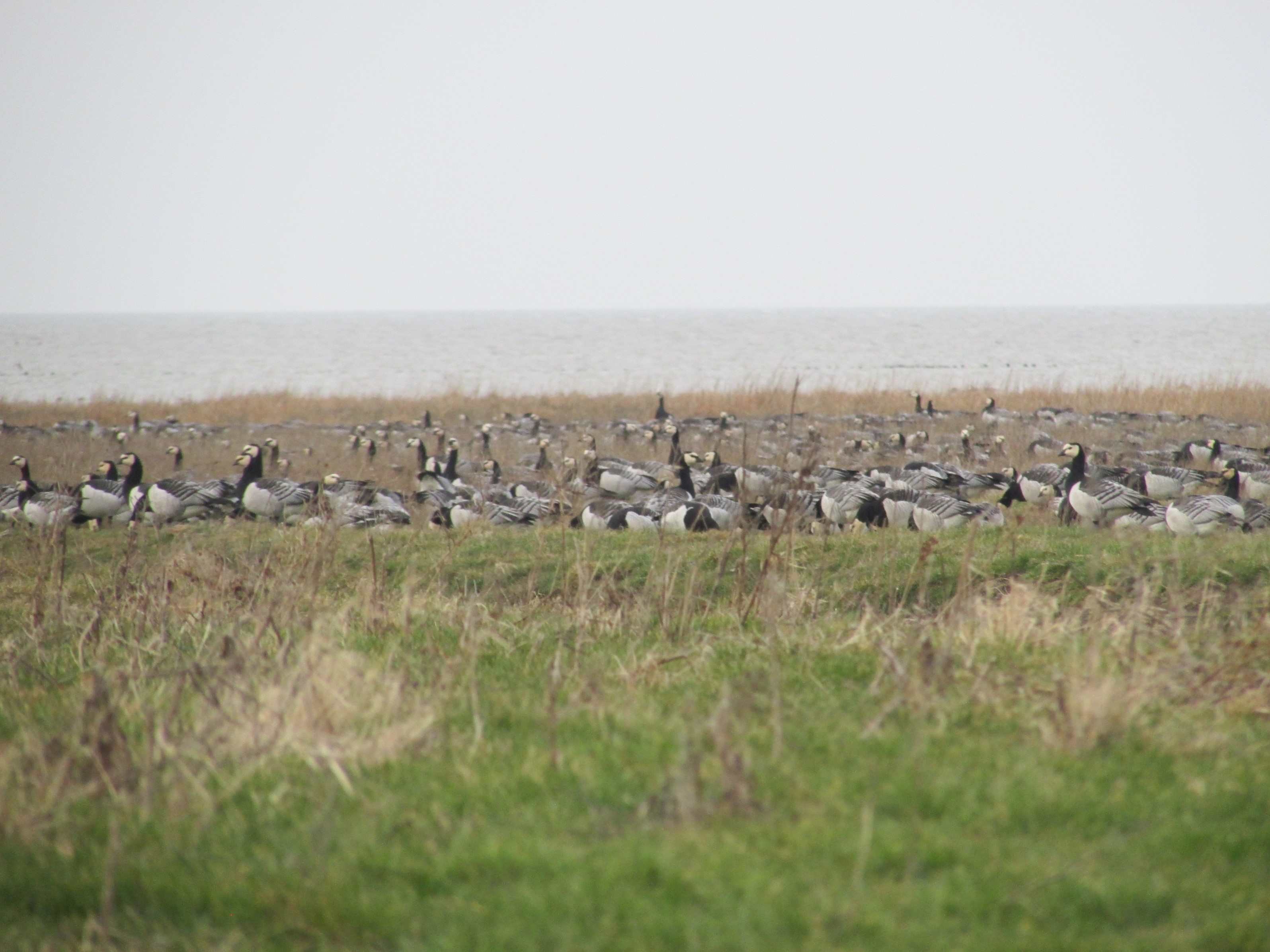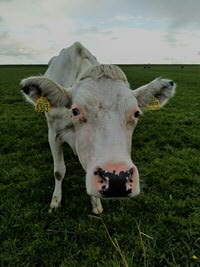Begrazing kwelders helpt bij kustverdediging

Een combinatie van natuurlijke kwelders en conventionele dijken kan, ter bescherming tegen overstroming, een duurzamer en doelmatiger alternatief bieden voor nieuw te bouwen kustverdedigingswerken. Begrazing door vee, ganzen en hazen en kunstmatig maaien zijn belangrijk bij het beheer van deze kwelders, constateerden onderzoekers van de RUG en het NIOZ.
Over de hele wereld leven mensen in kustgebieden die vatbaar zijn voor overstroming. Dijken bieden een traditionele bescherming tegen overstroming ten behoeve van kustverdediging. Maar ook kwelders die grenzen aan deze traditionele keringen kunnen een krachtige bijdrage leveren aan kustbescherming, door het verminderen van golfkrachten op dijken.
Kweldernatuurbeheer
Een combinatie van natuurlijke kwelderhabitats en conventionele dijken kan dus, ter bescherming tegen overstroming, een duurzamer en doelmatiger alternatief bieden nieuw te bouwen kustverdedigingswerken. Maar om deze op de natuur gebaseerde kustverdediging te waarborgen moet langdurig voor voldoende breedte en stabiliteit van de kwelders worden gezorgd. Onderzoekers van de Rijksuniversiteit Groningen (RUG) en het Koninklijk Nederlands Instituut voor Onderzoek der Zee (NIOZ) onderzochten daarom hoe kweldernatuurbeheer ten behoeve van de kustverdediging kan worden geoptimaliseerd.
Ze ontdekten dat begrazing door zowel vee alsook kleine herbivoren zoals ganzen en hazen, evenals kunstmatig maaien, de erosie van kwelders kunnen verminderen en zo bijdragen aan een op de natuur gebaseerde kustverdediging. De resultaten van dit onderzoek zijn gepubliceerd in het vaktijdschrift Journal of Applied Ecology.
Experimenten
Voor dit onderzoek zijn op verschillende locaties op de kwelder van Schiermonnikoog 78 bodemmonsters verzameld. Op deze locaties waren gebieden langdurig afgesloten om begrazing door koeien of kleinere herbivoren zoals hazen en ganzen tegen te gaan. Monsters afkomstig uit graasgebieden werden vergeleken met monsters uit deze afgesloten natuurgebieden en kunstmatig gemaaide locaties. Bodemkernen werden naar het laboratorium vervoerd en in gecontroleerde bassins blootgesteld aan kunstmatige golven. Onderzoekers hebben vervolgens in totaal 38 uur lang de bodemerosie gemeten.
Erosiebestendigheid

Eerste auteur Beatriz Marin-Diaz, van het instituut GELIFES van de RUG, legt uit: ‘De zanderigste kernen erodeerden het sterkst, terwijl grondmonsters met meer klei beter bestand waren tegen erosie. Het grazen van koeien versterkte deze erosiebestendigheid doordat de grond werd vertrapt en zo samengepakt. Verrassend genoeg hielpen kleine herbivoren mee om de erosie te verminderen doordat zij de vegetatie veranderden. Er vond een toename plaats van planten met hoge worteldichtheden die de grond samenbinden.’ Bovendien bleek uit het onderzoek dat kunstmatig maaien ook bijdraagt aan erosiebestendigheid, doordat het dieren weert die de grond omwoelen en zo het sediment destabiliseren.
Kustbeschermingsfunctie versterkt
Al met al kunnen begrazing en kunstmatig maaien de erosie van fijnkorrelige bodems verminderen, waardoor kwelders beter bestand zijn tegen laterale erosie. Maar bodemverdichting door vee leidt ook tot verlaging van de kwelder, waardoor zijn vermogen om de zeespiegelstijging bij te houden afneemt.
Om kwelders effectief te beheren voor kustbescherming, beveelt de studie daarom matige of wisselende weidegang aan. De studie adviseert intensieve begrazing te vermijden in sedimentarme systemen die gevoelig zijn voor zeespiegelstijging en onderzoek te doen naar maatregelen om kleine grazers te behouden. Op deze manier kunnen kwelders effectief worden beheerd en hun kustbeschermingsfunctie worden versterkt.
Meer informatie
Dit onderzoek is het resultaat van een samenwerkingsverband tussen de Rijksuniversiteit Groningen en het Koninklijk Nederlands Instituut voor Onderzoek der Zee (NIOZ). Het maakt deel uit van het Perspectief-onderzoeksprogramma All-Risk, projectnummer P15-21 B1, dat medegefinancierd wordt door het NWO-domein Toegepaste en Technische Wetenschappen in samenwerking met het Ministerie van Infrastructuur en Waterstaat (Rijkswaterstaat), Deltares, STOWA, het waterschap Noorderzijlvest, het waterschap Vechtstromen, It Fryske Gea, onderzoeks- en adviesbureau HKV lijn in water, Natuurmonumenten en het Hoogheemraadschap Hollands Noorderkwartier.
Meer nieuws
-
17 december 2025
Ben Feringa wint Feynmanprijs
-
11 december 2025
Stormachtige planeten en een onverwachtse atmosfeer
